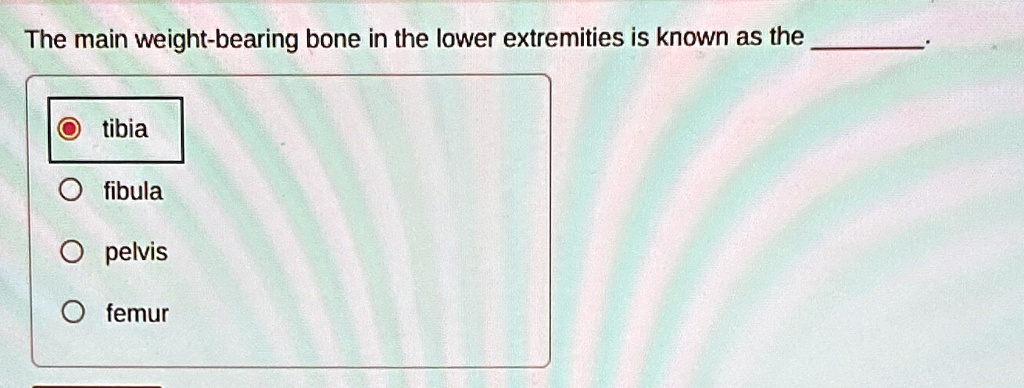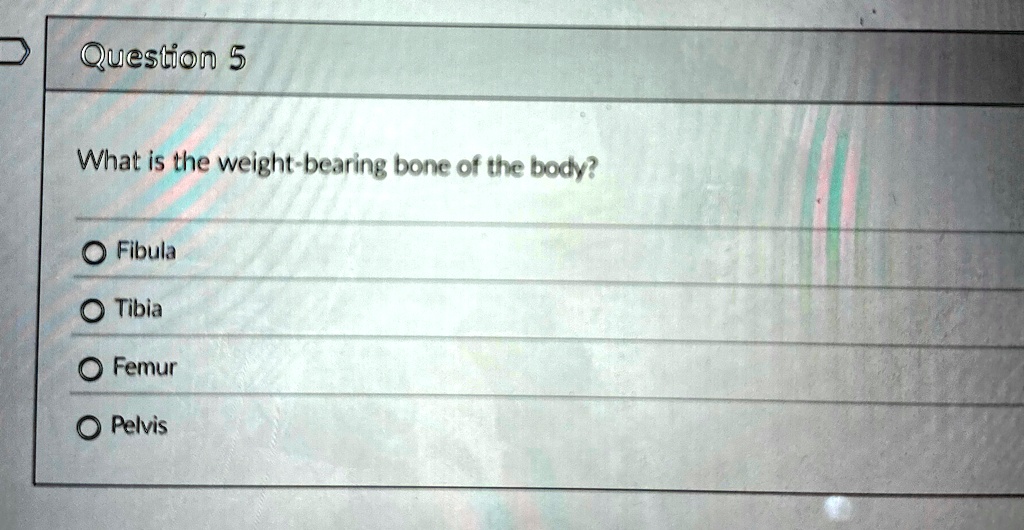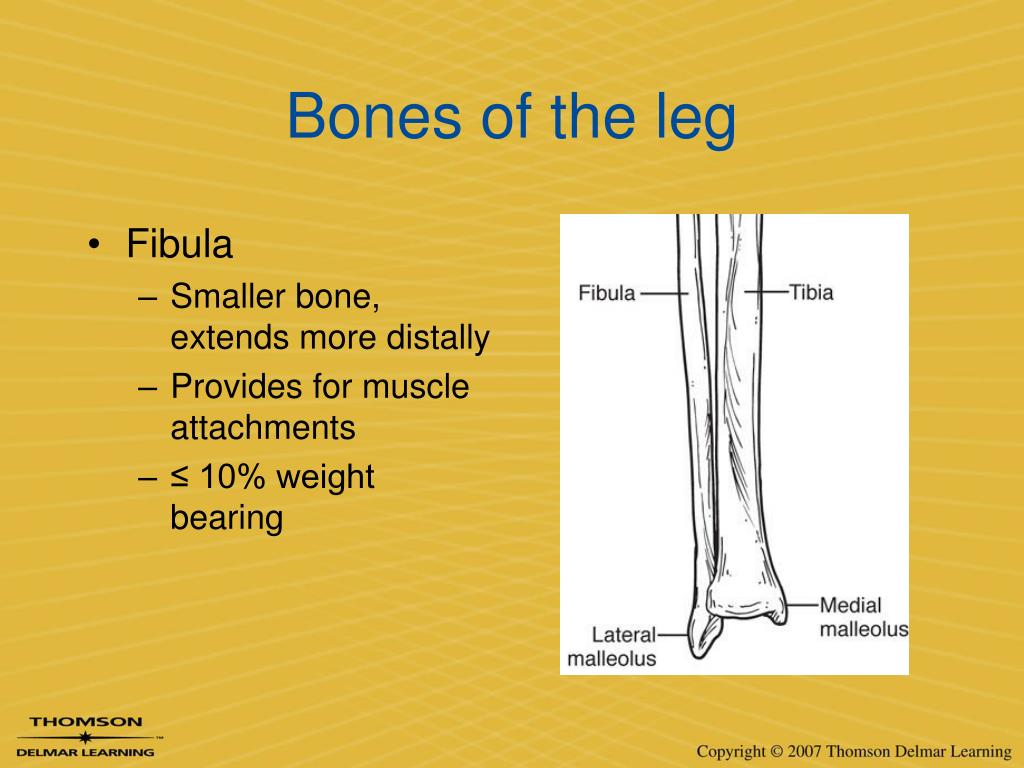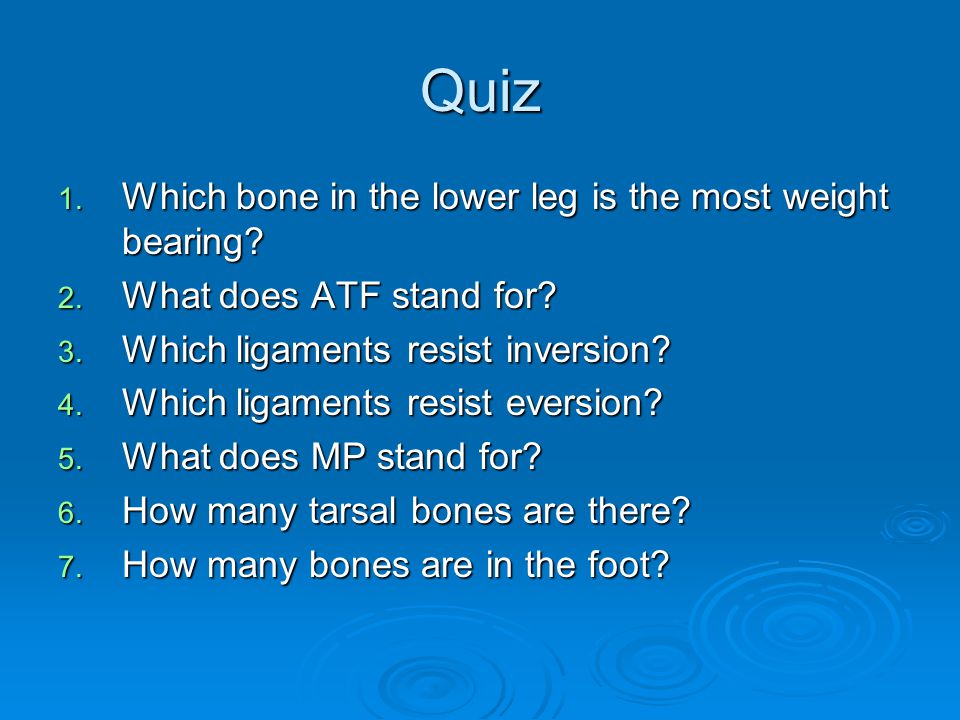Which Of The Following Is A Weight-bearing Bone

A concerning number of individuals are demonstrating a critical knowledge gap regarding basic human anatomy. Recent surveys and online searches reveal widespread confusion about which bones in the human body are actually weight-bearing.
This lack of understanding could lead to delayed diagnoses, inappropriate self-treatment of injuries, and a general neglect of musculoskeletal health. This article aims to definitively clarify which bones are primarily responsible for supporting the body's weight.
The Weight-Bearing Champions: A Clear Definition
The primary weight-bearing bones in the human body are those that directly support and transmit the weight of the torso, head, and arms down to the ground. These bones are essential for standing, walking, running, and any activity that involves being upright.
The key weight-bearing bones are located in the lower body: the femur (thigh bone), tibia (shin bone), and bones of the foot (talus, calcaneus, and other tarsals and metatarsals).
These bones work in concert to distribute weight and provide stability.
The Femur: Upper Leg Powerhouse
The femur, the longest and strongest bone in the human body, is the primary weight-bearing bone in the upper leg. It extends from the hip to the knee, transmitting weight from the pelvis down to the lower leg.
Fractures of the femur are serious injuries, often requiring surgery and extensive rehabilitation.
The Tibia: The Shin's Strength
The tibia, or shin bone, is the larger of the two bones in the lower leg and bears the majority of the weight transmitted from the femur. It articulates with the femur at the knee and the talus bone at the ankle.
Tibial fractures are common, especially in high-impact sports and accidents.
The Foot: A Complex Weight Distributor
The bones of the foot, including the talus, calcaneus (heel bone), and other tarsal and metatarsal bones, are crucial for weight distribution and shock absorption. The talus receives weight from the tibia and distributes it to the rest of the foot.
The calcaneus provides a lever for push-off during walking and running.
Problems with foot mechanics or structural issues can lead to pain and instability in the entire lower extremity.
Bones That Assist, But Don't Primarily Carry the Load
While the femur, tibia, and bones of the foot are the primary weight-bearing bones, other bones play supporting roles.
The fibula, the smaller bone in the lower leg, provides stability to the ankle but does not bear significant weight. The pelvis, while crucial for connecting the upper and lower body, distributes weight rather than bearing it directly.
The vertebrae of the spine also bear weight, but their primary function is to protect the spinal cord and facilitate movement.
Consequences of Misunderstanding
The confusion surrounding weight-bearing bones can have serious implications. Individuals might attempt to bear weight on an injured leg, exacerbating the injury and delaying healing.
They also might misinterpret pain signals, leading to incorrect self-diagnosis and treatment. This is especially concerning for individuals with pre-existing conditions like osteoporosis.
"A clear understanding of basic anatomy is essential for preventing injuries and promoting overall health," says Dr. Anya Sharma, an orthopedic surgeon at City General Hospital. "When people don't know which bones are weight-bearing, they may not take the necessary precautions to protect them."
Addressing the Knowledge Gap
Educational initiatives are needed to improve public understanding of musculoskeletal health. Schools, healthcare providers, and public health organizations should prioritize teaching basic anatomy and injury prevention.
Online resources should be accurate and easily accessible.
Efforts must be made to dispel common misconceptions and promote informed decision-making regarding musculoskeletal care.
Next Steps: Spreading Awareness
Further research is needed to assess the extent of this knowledge gap and identify effective strategies for addressing it. Health organizations are encouraged to launch public awareness campaigns focusing on bone health and injury prevention.
This information is crucial for empowering individuals to take control of their musculoskeletal health and seek appropriate medical care when needed. Ignoring the basics can lead to severe and often preventable consequences.
Ongoing efforts to improve public education are essential for ensuring healthier and more active communities.






..jpg)



+Long+Bones+Longer+than+they+are+wide+Has+a+shaft+and+2+ends.jpg)

+The+larger%2C+medial+weight-bearing+bone+of+the+leg.jpg)
.jpg)
+The+larger%2C+medial+weight-bearing+bone+of+the+leg.jpg)
+is+the+largest+bone+in+the+human+body.+The+patella+(kneecap)+helps+connect+the+upper+leg+to+the+lower+leg..jpg)


